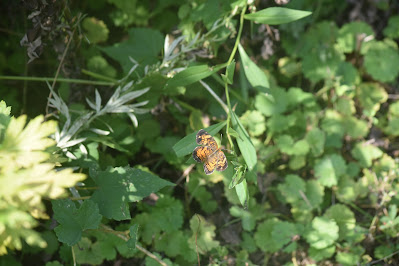This weekend I went on my first Butterfly Count, organized by Audobon Virginia, but the data will be sent to the National American Butterfly Association (NABA).
For this survey we visited Glencarlyn Library, Glencarlyn Park, Bluemont Park, Bonair Park, and the W&OD Trail.
Here are my favorite photos of the day (click to see a larger image):
Cabbage White
Eastern Blue Tailed
Eastern Blue Tailed
Monarch
Pearl Crescent
Silver Spotted Skipper
Variegated Fritillary
Fiery Skipper
Clouded Skipper
I had a great experience. Audubon put on a very helpful webinar a few days prior to the count to help train us on common butterflies in Virginia. I even got a copy of the new local field guide at the picnic after the count, signed by one of the authors - Judy Gallagher! It's hard to believe how much I learned about butterflies in 4 days. Some things that stuck out:
- Not all butterflies are bright/large - skippers are quite small, and some butterflies are brown or grey.
- You can tell a butterfly from a moth by the antennae - butterflies have slender antennae while moths often have larger or feathery antennae.
- The bulbs at the end of the antennae are called clubs - and they are important for identification.
- A butterfly's antennae can be "checked", or striped, see the Pearl Crescent above.
- The cloudless sulphur butterfly is a large yellow butterfly that seems almost a light green at times, no markings, and is very common in the area. I have never heard of or seen this butterfly before Saturday, but on Saturday I saw at least 5! Amazing what is right in front of us that we just don't notice.
- All butterflies have a host plant, which means its the plant they usually like to lay their eggs on - for example, the host plant of a viceroy (a monarch look-alike) is a willow tree.









No comments:
Post a Comment